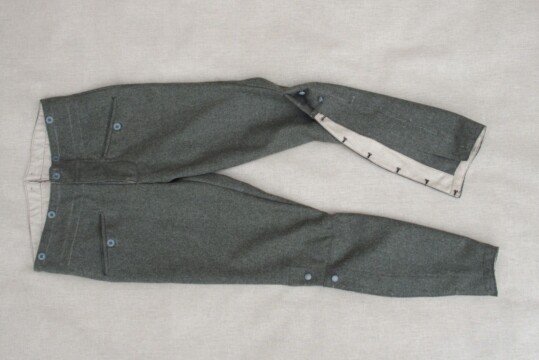Basic Uniform
The uniform is obviously one of the most crucial parts about making an impression. You can have all the correct kit, but if your uniform is incorrect it will throw all of your hard work out the window. Due to the large variety of uniforms in the KuK, it can be a little bit more difficult to find what you are looking for depending on what impression you are choosing. Generally, your uniform choice will be impacted by 3 main factors:
1) The year you are trying to reenact
2) The Regiment / Army Branch you are choosing
3) The rank you are representing
For most general impressions, these uniform sets will apply to you based on the year you are choosing.
The Standard Field Cap “Feldkappe”


Field Cap photos are courtesy of Vit-Zamanek on Ebay. https://www.ebay.com/usr/vit-zemanek?_trksid=p2047675.l2559
For every Common Army impression (with the main exception of the Bosnian Common Army Regiments) you will need a standard field cap. Most reproductions are either of the M1908 Hechtgrau or M1915 Feldgrau Variety. It is important to note that there was a massive amount of variety in materials, colors, and make of field caps, especially later in the water when materials became scarcer. This reality means that imperfections may sometimes help your impression be more authentic. * This not an excuse to throw away authenticity, but rather a way to explain slight variations in build or color. For more extensive reading on field caps in general, I highly recommend Feldkappe by Brian Calkins, it is discussed more in the “Suggested Reading Section”
From 1916 onward, due to the lack of available materials, almost all new caps were made out of reprocessed wool fabric, felt, or other substitute materials.
Tunics


All the tunics are courtesy of Jarda Rezac and his excellent reproduction services. His website can be found here: https://www.militarie-repliky.cz/en/ and is also discussed further in the “Vendors” Section.
There are a variety of sources for tunics, as can be seen in the “Vendors” Section. Just like the field cap, one of the primary differences in terms of making your choice of tunic is down to the year in which you are portraying, as the Hechtgrau varieties were used earlier in the war while the Feldgrau was introduced from 1915 onward. Additional factors will play into your choice of tunic after year such as: Are you an Officer, NCO, or enlisted man? Are you a member of any specialized branches that used different tunic designs or rank insignia? How did your branch wear their rank insignia? (For example, I have seen aviator collar tabs which wrapped all the way around the collar whose design appear to be for standing-style collars). Tunics one of the most varied pieces you will find for making an impression. The design of the collar is typically the major difference, but other branches such as the Landwehr Mountain Infantry had tunics that had very clear differences in make.
After having completed your first kit, you can consider having custom made tunics that would be considered “private purchase” items. The most common variant was the “Summer Tunic” which was made of a variety of lightweight materials, the most common being types of linen. Common photos show them in brighter white / cream colors, but they also existed in feldgrau as well. Corduroy of various shades of feldgrau, grey, and brownish colors were used in variations of standard tunics and Karlbluses. Several uniform tailors can have these styles custom made for you, but you typically have to buy the material yourself so contact them first. I’ll follow up in greater detail on these items in a different section here.
For additional reading on tunics and their various models, read:
– The Austro-Hungarian Army in the First World War – Uniforms and Equipment – from 1914 to 1918 by Verlag Militaria
– Uniforms & Equipment of the Austro-Hungarian Army in World War One by Spencer A. Coil
Trousers
All the trousers to the left are courtesy of Jarda Rezac and his excellent reproduction services. His website can be found here: https://www.militarie-repliky.cz/en/ and is also discussed further in the “Vendors” Section.
This is, for the most part, the easy part of most impressions. Most parts of the KuK wore the same model of trousers throughout each year (1915 – onward the Feldgrau model was introduced and Hechtgrau was mainly phased out). The only exceptions to this are some of the Legions, some Hungarian Units with a sort of decorative knot on their thigh, and dress uniforms.
For additional reading on trouser variety and the various models throughout the war, read:
– The Austro-Hungarian Army in the First World War – Uniforms and Equipment – from 1914 to 1918 by Verlag Militaria
– Uniforms & Equipment of the Austro-Hungarian Army in World War One by Spencer A. Coil





